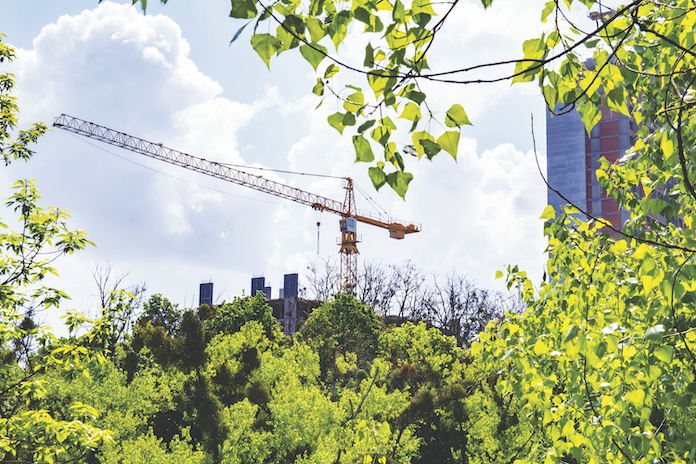Infrastructure projects account for 16% of the UK’s carbon emissions, which is why construction needs to apply a circular economy focus to projects, says Philip Charles

Image: Dreamstime
As the country begins its journey to recover from the covid-19 pandemic, the prime minister’s urgent call to build back better, greener and faster is expected to accelerate project delivery. As we emerge from the global outbreak, we must also work towards reducing greenhouse emissions in line with achieving net zero carbon emissions by 2050.
Infrastructure accounts for 16% of the UK’s total carbon emissions and has influence over a further 37% which is attributable to the materials and energy required to build, maintain and operate projects. The Major Infrastructure – Resource Optimisation Group (MI-ROG), of which Aecom is a convener, believes it is imperative that a circular economy focus is applied to the planning and delivery of infrastructure projects to make sure the amount of carbon that is produced is limited.
While deploying new materials will be unavoidable at times, implementing circular approaches in line with net zero goals during the early stages of the design process can help the UK infrastructure sector reduce carbon emissions by up to 50% as well as cut costs and support a more resilient supply chain.
The UK government’s Infrastructure Carbon Review (ICR) explores various ways the industry can reduce carbon emissions when designing and delivering infrastructure projects. According to the latest MI-ROG white paper, circular economy approaches can be applied to the ICR themes as illustrated below:
- Build nothing – challenging the need for new infrastructure and exploring alternatives.
- Build less – maximising the use of existing assets through optimised operation and management.
- Build clever – designing and implementing low-carbon materials, streamlining delivery processes and resource efficiency.
- Build efficiently – embracing innovation and eliminating waste.
In order to accelerate this idea and make sure infrastructure owners and operators have the knowledge and tools to reduce carbon emissions in line with net zero goals, new business models are required. This includes a shift from product to service business models while embracing new low-carbon materials, digital design and modular construction as well as facilitating delivery of innovation.
It is imperative to gather relevant baseline data and set ambitious yet achievable targets, which will amplify the need to execute a successful circular economy approach. Compiling data on material use, recycled content and embodied carbon from pilot projects can be used as a tool to measure performance and identify further opportunities for carbon reductions.
For this idea to successfully develop and achieve maximum benefits, collaboration is key, particularly across the infrastructure sector as this will influence future policy and standards.
Philip Charles is principal consultant, climate change and sustainability services, Aecom










